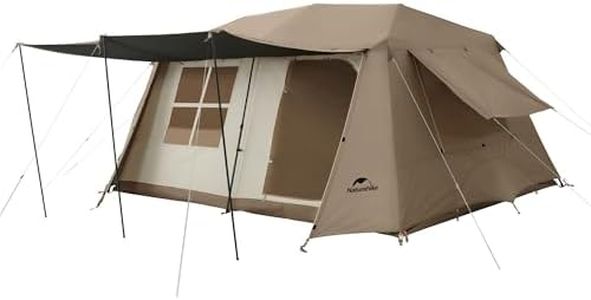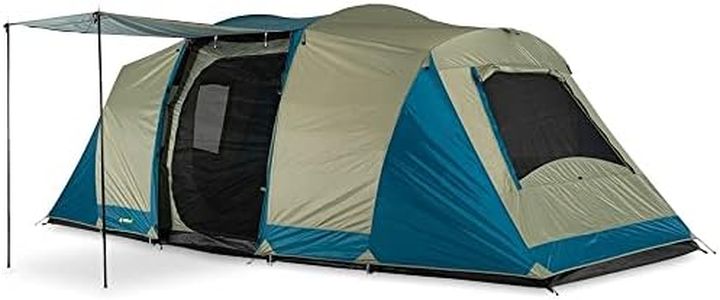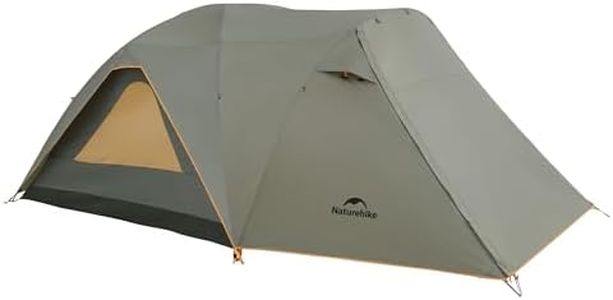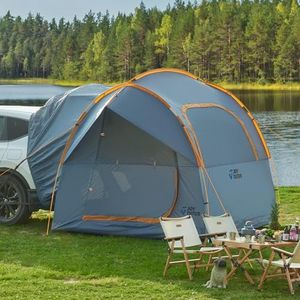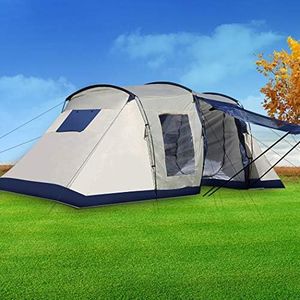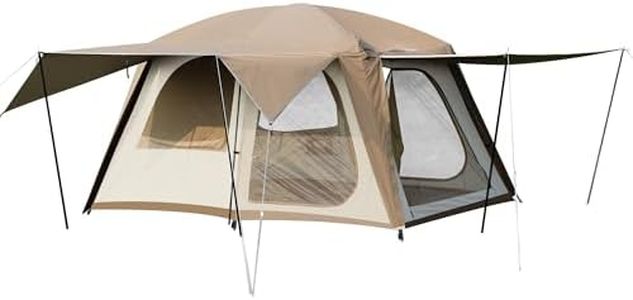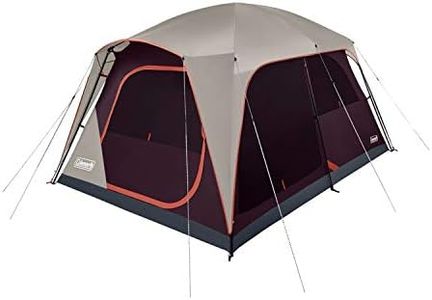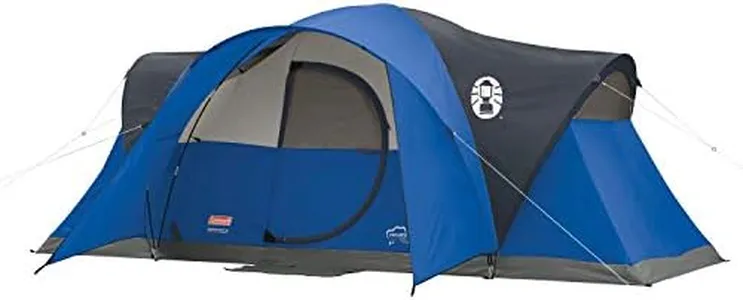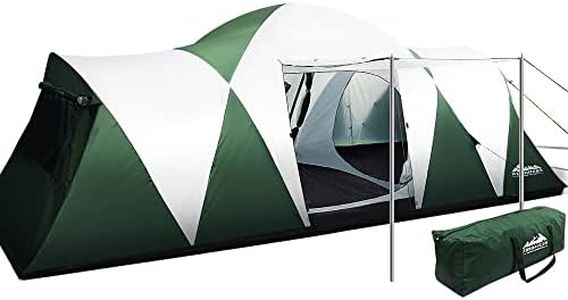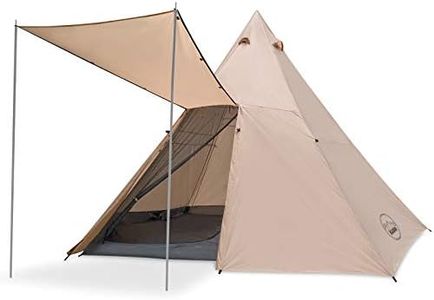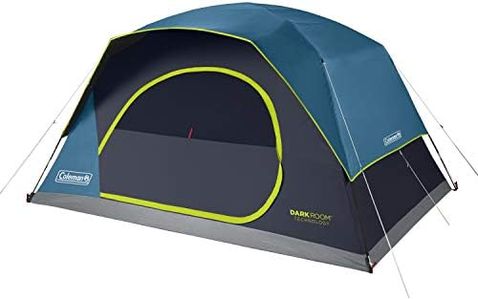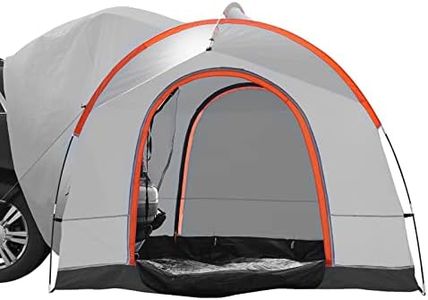We Use CookiesWe use cookies to enhance the security, performance,
functionality and for analytical and promotional activities. By continuing to browse this site you
are agreeing to our privacy policy
10 Best 8 Person Tents
From leading brands and best sellers available on the web.Buying Guide for the Best 8 Person Tents
When you're shopping for an 8-person tent, it's important to focus on the features that matter most for comfort, durability, and practicality. While all 8-person tents are designed to fit a larger group, they come in different shapes, materials, and designs that suit different camping styles. Start by considering how you'll use the tent—is it for family camping, group adventures, festivals, or more rugged outdoor experiences? Think about how portable you need it to be, how easy it should be to set up, and what kind of weather you'll encounter. Matching the tent to your needs ensures you get the right balance of space, convenience, and protection.Floor AreaFloor area tells you how much room the tent provides on the inside, usually measured in square feet or meters. It’s important because more space means more comfort—whether that's for sleeping bags, air mattresses, or personal gear. Tents with smaller floor areas are more compact and easier to carry and heat up, while those with larger areas offer more spreading room but may be heavier and harder to set up. When deciding, think about how many people and items you'll have inside. If you want to keep lots of gear inside or prefer spreading out, aim for a bigger floor area; if everyone can pack light and you’re short on space, a slightly smaller tent may work.
Peak HeightThe peak height is the tallest point inside the tent and is normally measured in inches or centimeters. A higher peak height allows most people to stand up inside, making changing clothes or moving around easier. Lower peak heights provide less wind resistance and may be warmer but make the interior feel more cramped. If you value the ability to stand up and move comfortably, look for tents with a taller peak height. If you’re focused on reducing weight or expect windy conditions, a lower profile may be preferable.
Tent ShapeTent shape affects space, stability, and how well it sheds wind and rain. Common shapes for 8-person tents include cabin, dome, and tunnel. Cabin tents offer near-vertical walls that create more headroom and usable space—great for families or those wanting comfort. Dome tents are more aerodynamic, shedding wind and rain better and are easier to set up—ideal for variable weather. Tunnel tents give a compromise of space and stability. Think about your main camping environment; for comfort in nicer weather, cabins are great, but if you expect storms or wind, a dome or tunnel shape may be smarter.
Number of Doors and WindowsDoors and windows influence accessibility and ventilation inside the tent. More doors mean less waiting and disturbing others when entering or exiting, which is helpful for larger groups. More windows improve airflow and reduce condensation buildup but can also mean more openings for rain to get in if unprotected. If privacy or quick access is important—especially for group or family use—choose a tent with at least two doors and multiple windows. If you camp in very dry or cool areas, you might get by with fewer.
Season RatingSeason rating tells you which types of weather the tent is built to handle. Three-season tents are common and suitable for spring, summer, and fall, handling rain and moderate wind. Four-season tents can handle snow, stronger winds, and colder temperatures but are bulkier and often less ventilated. If your camping is during mild weather, a three-season tent is usually enough. For winter or high-altitude trips, or if you expect severe conditions, a four-season tent is safer.
Setup MethodSetup method describes how the tent is assembled, such as traditional pole-and-sleeve, freestanding, or instant/cabin designs. Traditional set-ups can be more fiddly but often allow for lighter or more flexible tents. Freestanding tents can be moved around before staking, which is convenient. Instant and cabin tents use pre-attached poles and are the quickest to set up but may weigh more or be bulkier packed. If you’re camping with children or want to keep things simple, instant or cabin-style tents are easiest. More experienced campers or those hiking to their site may prefer traditional or freestanding designs for their flexibility.
Vestibules and StorageVestibules are covered areas outside the sleeping space for storing gear, shoes, or even cooking. Internal storage pockets help keep small items off the ground. These features help keep the sleeping area organized and less crowded. If you have plenty of equipment or are camping in messy weather where you want to store muddy gear outside the main tent, prioritize tents with large vestibules and multiple storage pockets. If you pack light or are mainly using the tent for sleeping, this may be less critical.
Materials and WaterproofingThe fabric and coating used on the tent, often nylon or polyester with a waterproof rating (measured in millimeters), determine how well the tent protects against rain and how long it lasts. More robust materials and higher waterproof ratings offer better protection and durability but can increase weight. If you expect heavy rain or want a longer-lasting tent, look for higher waterproof ratings and sturdy materials. If you only camp in dry climates, lighter fabrics may be fine.

